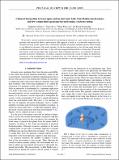Coherent backaction between spins and an electronic bath : non-Markovian dynamics and low-temperature quantum thermodynamic electron cooling
Abstract
We provide a versatile analytical framework for calculating the dynamics of a spin system in contact with a fermionic bath beyond the Markov approximation. The approach is based on a second-order expansion of the Nakajima-Zwanzig master equation but systematically includes all quantum coherent memory effects leading to non-Markovian dynamics. Our results describe, for the free induction decay, the full time range from the non-Markovian dynamics at short times, to the well-known exponential thermal decay at long times. We provide full analytic results for the entire time range using a bath of itinerant electrons as an archetype for universal quantum fluctuations. Furthermore, we propose a quantum thermodynamic scheme to employ the temperature insensitivity of the non-Markovian decay to transport heat out of the electron system and thus, by repeated reinitialization of a cluster of spins, to efficiently cool the electrons at very low temperatures.
Citation
Matern , S , Loss , D , Klinovaja , J & Braunecker , B 2019 , ' Coherent backaction between spins and an electronic bath : non-Markovian dynamics and low-temperature quantum thermodynamic electron cooling ' , Physical Review. B, Condensed matter and materials physics , vol. 100 , no. 13 , 134308 . https://doi.org/10.1103/PhysRevB.100.134308
Publication
Physical Review. B, Condensed matter and materials physics
Status
Peer reviewed
ISSN
1098-0121Type
Journal article
Description
S.M. acknowledges the support by the EPSRC under Grant No. EP/L015110/1. D.L. and J.K. acknowledge the support by the Swiss National Science Foundation and NCCR QSIT.Collections
Items in the St Andrews Research Repository are protected by copyright, with all rights reserved, unless otherwise indicated.

